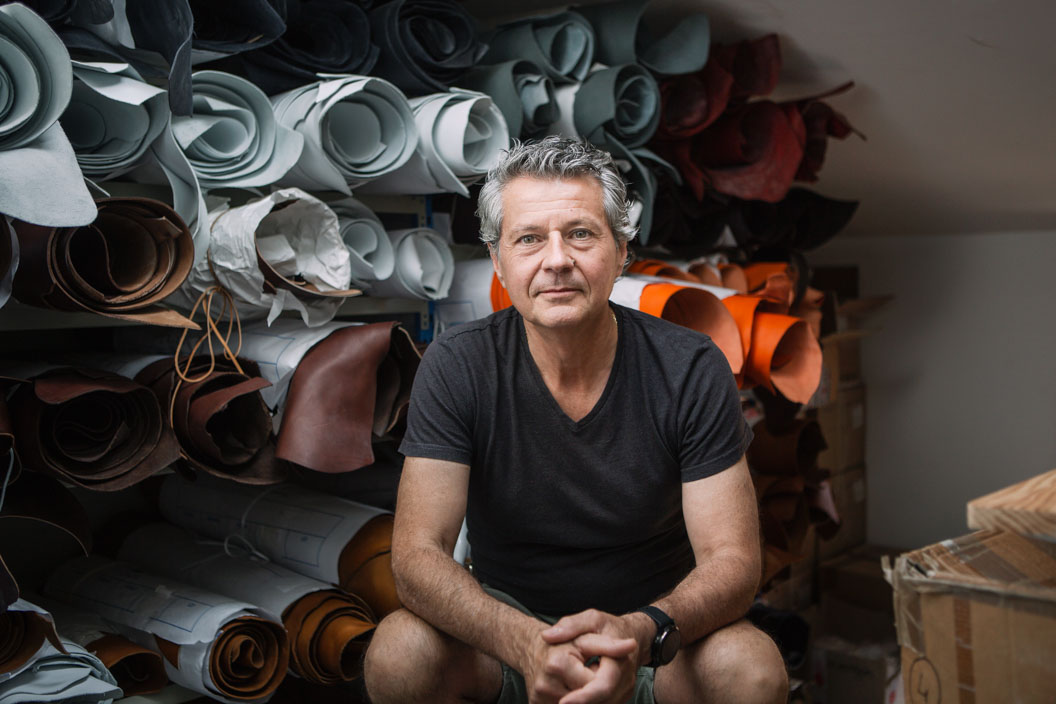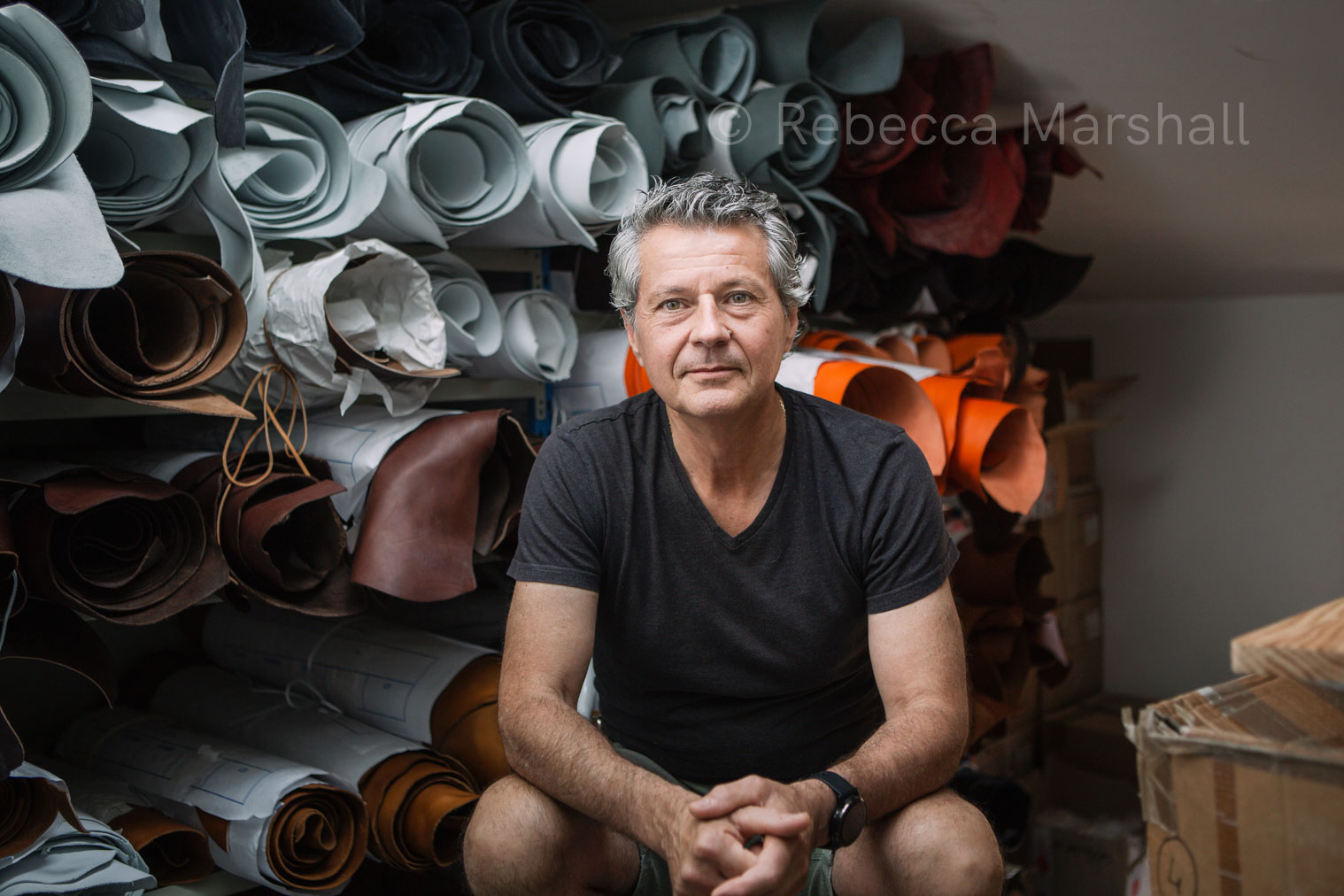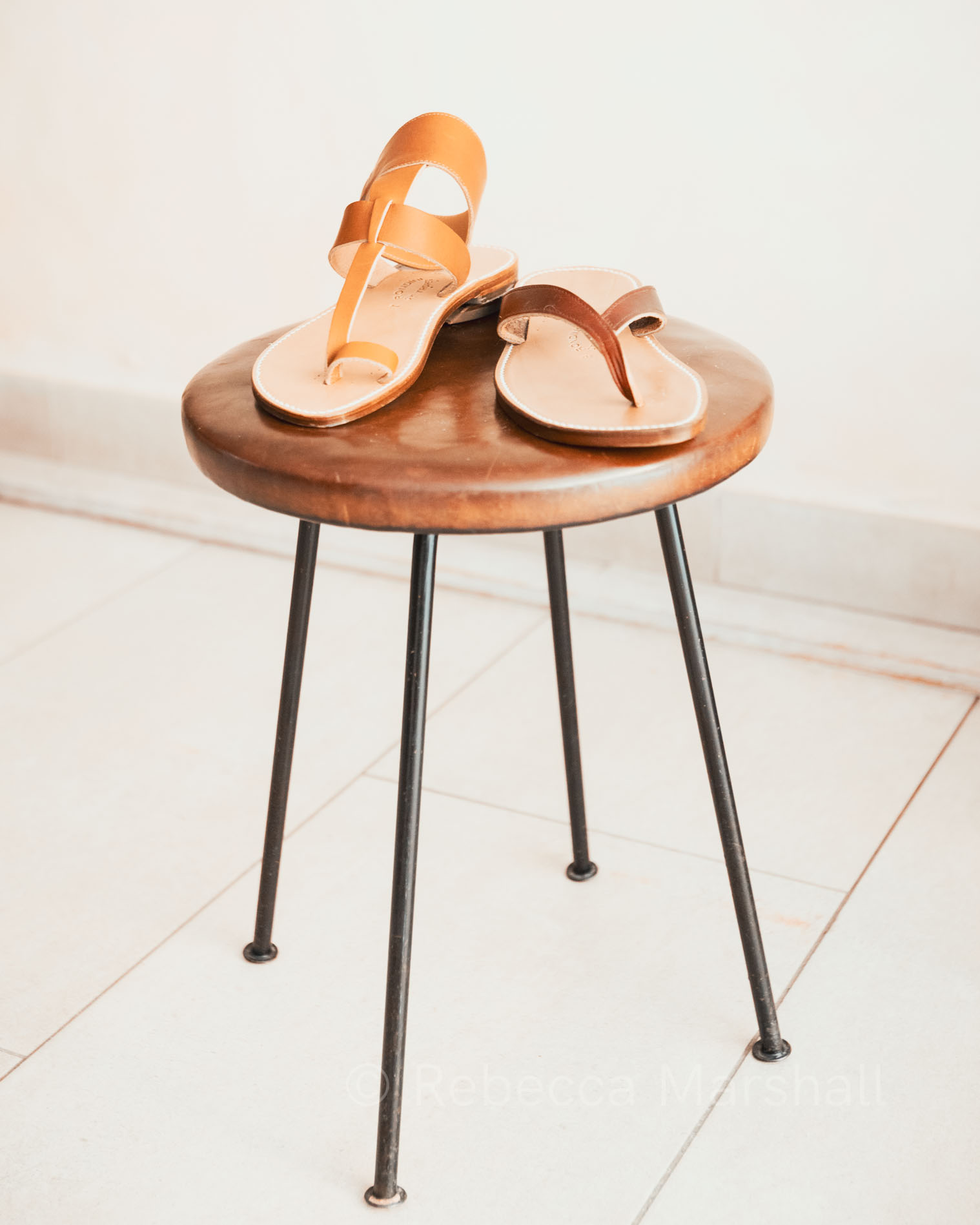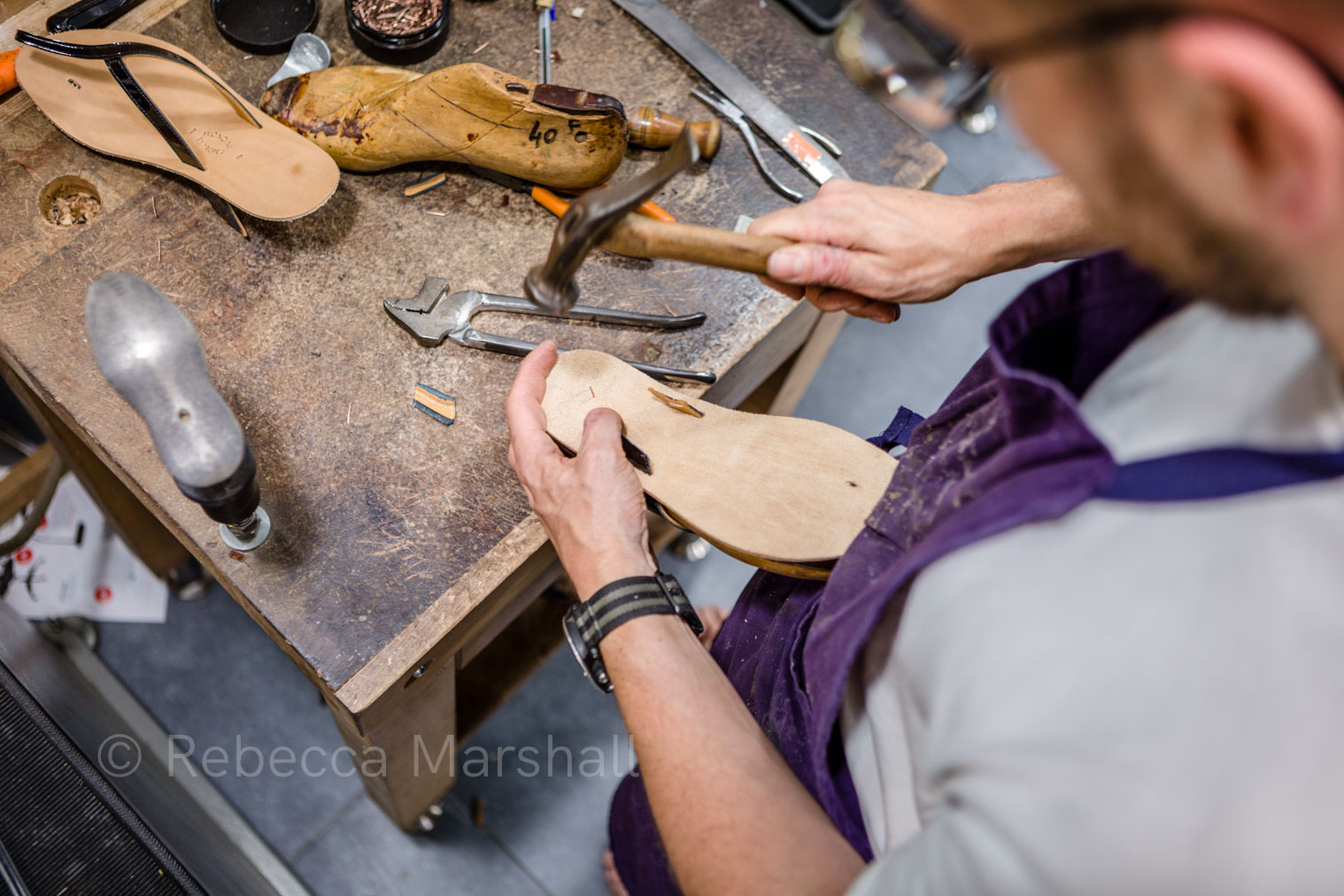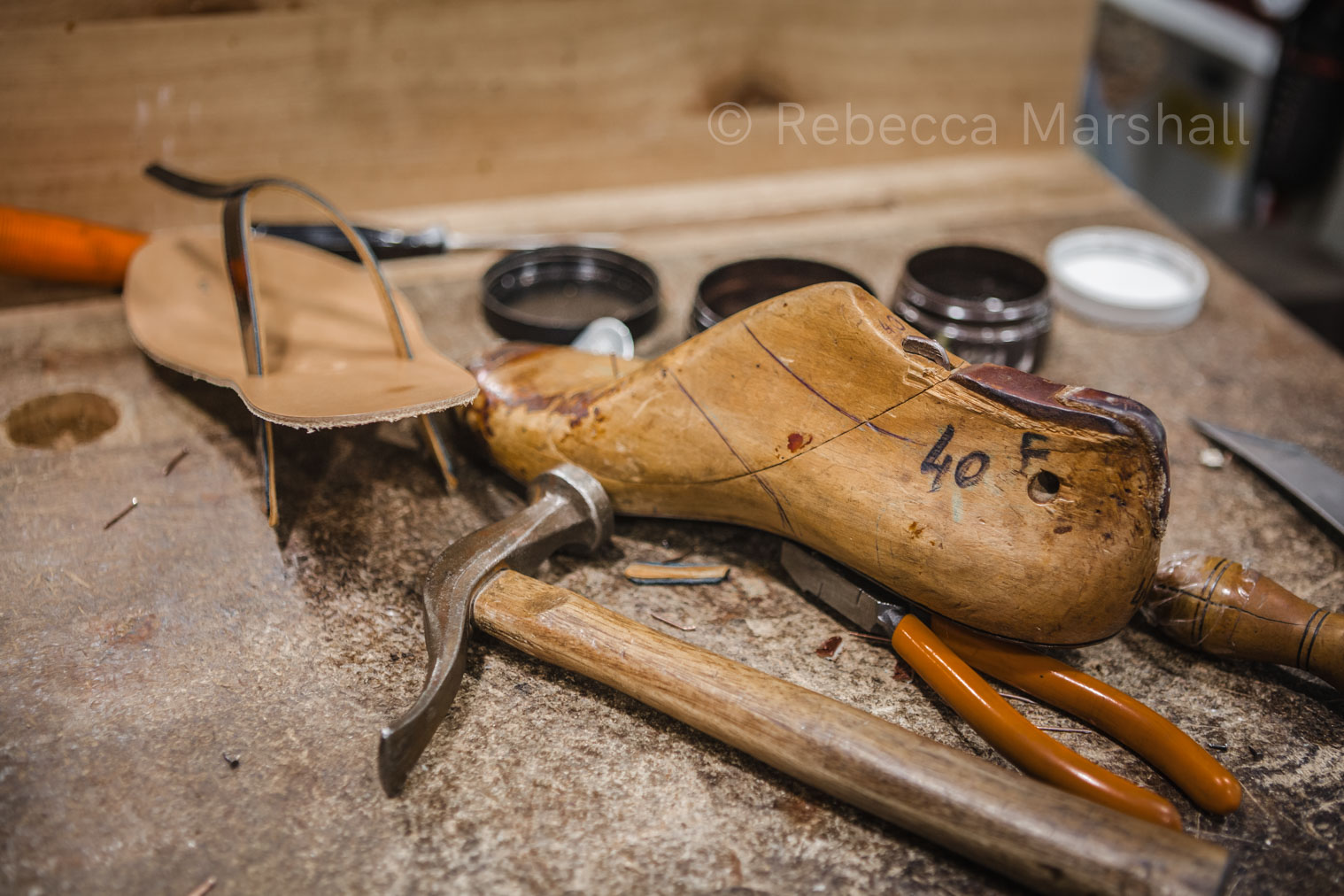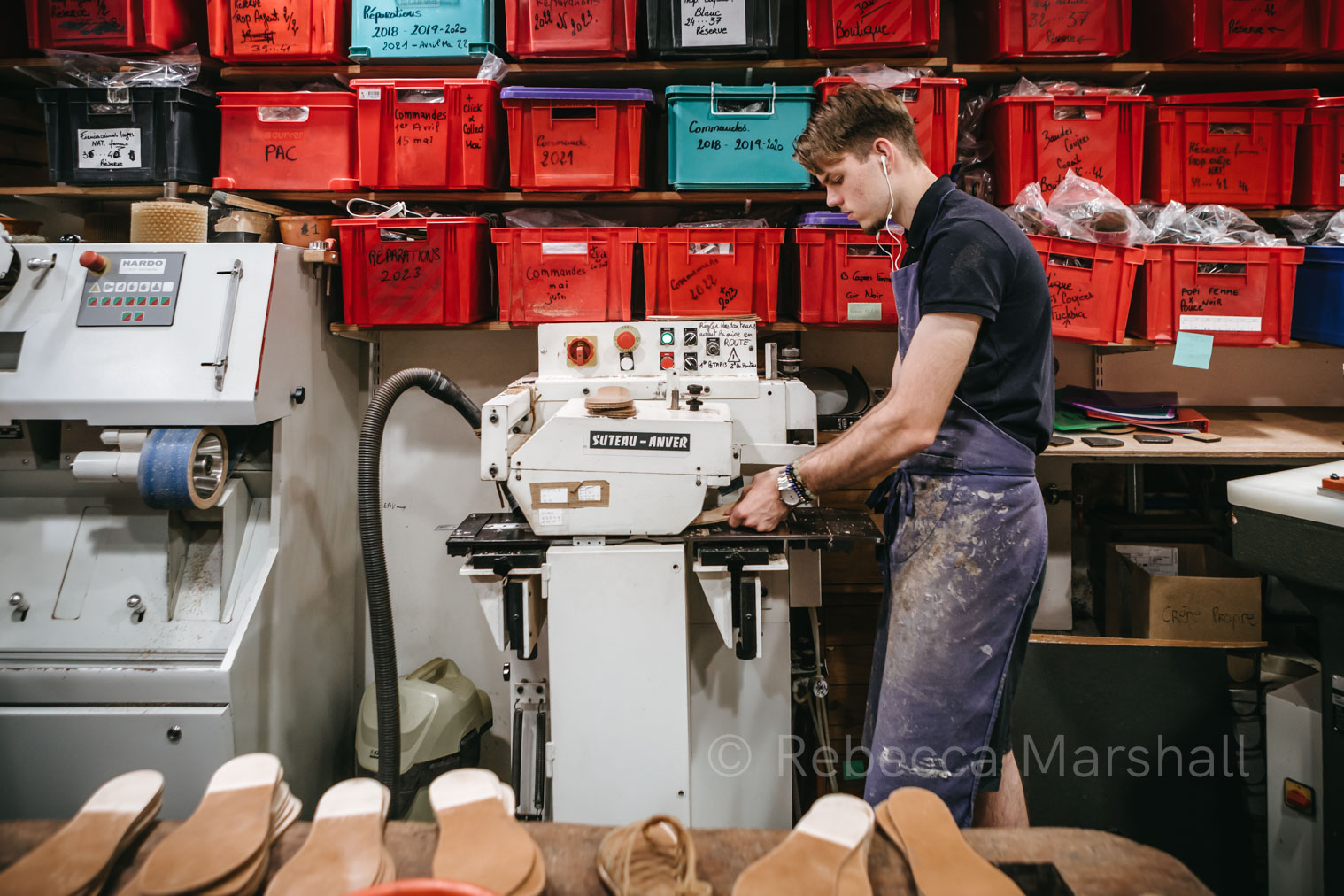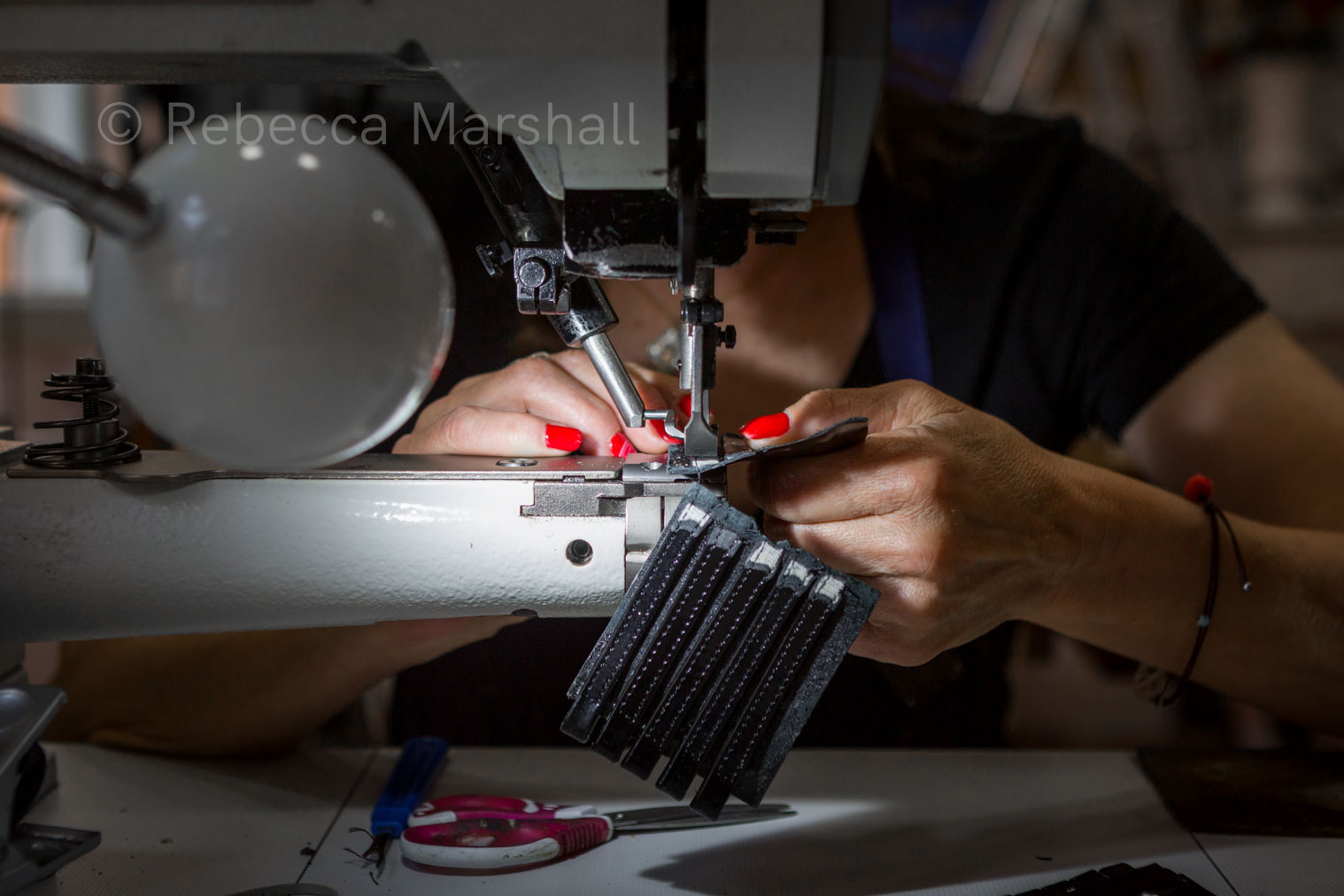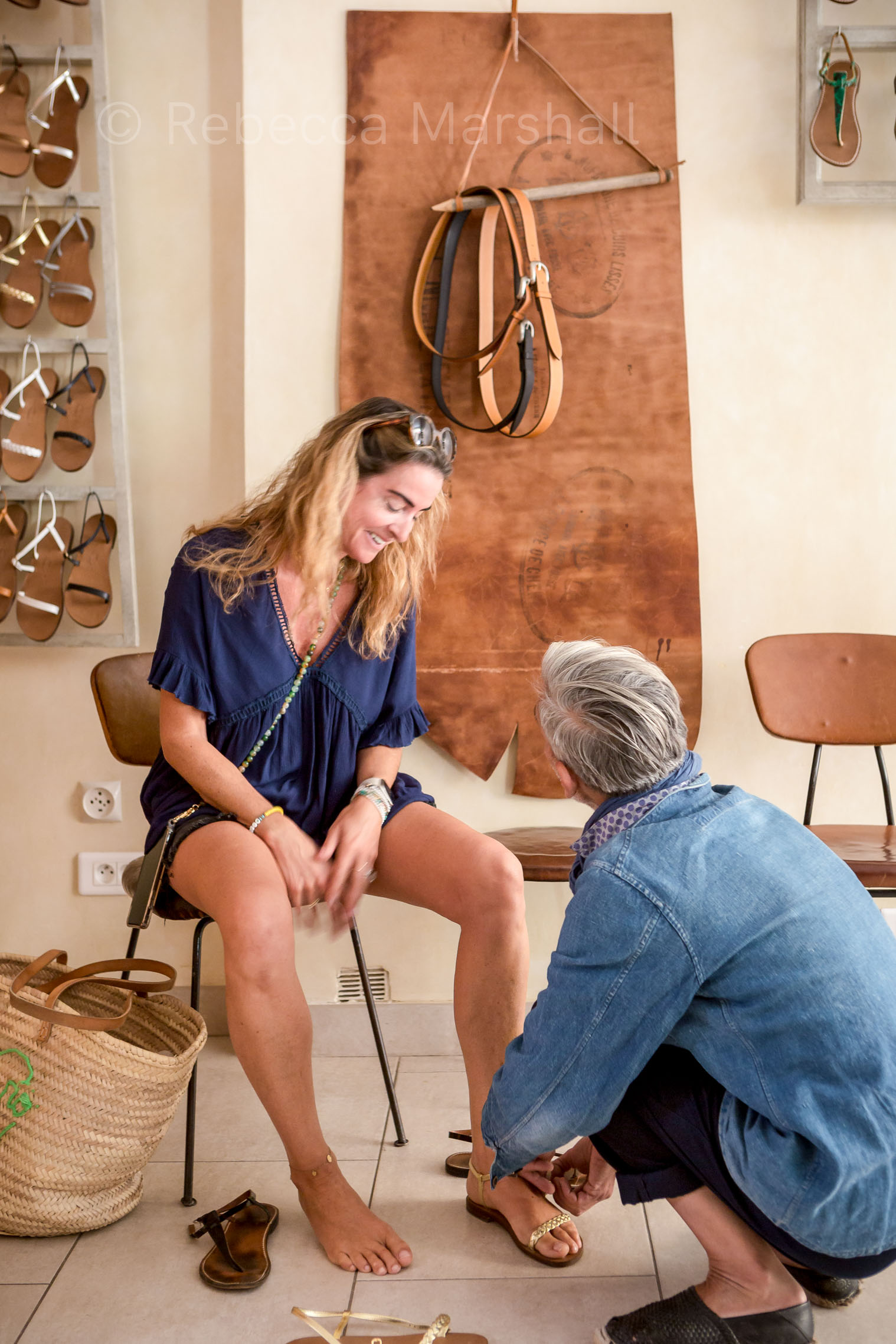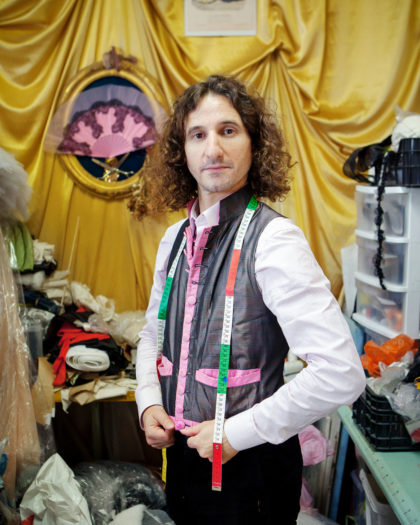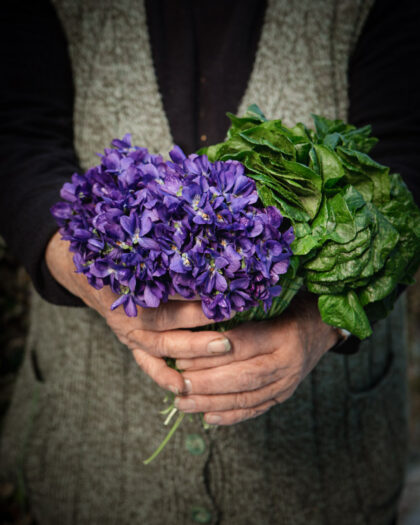Saint-Tropez tends to conjure up images of tanning oil and sunny beaches, along with upscale nightlife and shopping chic. Brigitte Bardot & Coco Chanel were among those whose love of this South of France village brought it fame and fortune as an elite summer travel destination. I’ve been commissioned as photographer to make portraits of several celebrities there, on and off their superyachts, yet my latest assignment was rather different. I made a reportage about artisans, a family of shoemakers, whose workshop is situated -improbably- in the heart of Saint-Tropez.
“Best-known Tropézienne sandal makers on the planet”
It transpires that the Rondini sandal atelier has been an institution in Saint-Tropez since it was founded in 1927. While it may not have invented the classic Tropézienne sandal, the Rondini family has certainly taken the shoe to another level, cladding the feet of Kate Moss, Claudia Schiffer and Inès de la Fressange for starters. According to an enthusiastic local paper, the Rondinis are “among the best known Tropézienne sandal makers on the planet” (the writer does not specify how many there are). This mythical, South of France fashion staple – a simple sandal; flat; all leather; with four or five leather straps – is still very much in vogue, proven by the fact that my photos had been commissioned by Monocle magazine, a litmus paper of refined fashion and design lifestyle trends.
Building on the past
If it were a person, Saint-Tropez would not be an early riser, and the town was still very quiet when I arrived for my rendez-vous at 10 am. The boutique/workshop – small, gold letters on the window, elegantly state ‘Rondini 1927’ – used to snuggle up to an épicerie (grocery). Yet today, food shops in the pedestrian streets off the iconic Place des Lices have nearly all been squeezed out to make way for high end clothing and design stores like Louis Vuitton, Jimmy Choo, Gucci and Valentino.
Alain Rondini, grandson of the original shoemaker who arrived from Tuscany a century ago, came out to welcome me. The shop, workshops and storage rooms that house Rondini’s 24 employees and the entire production process of a whole lot of sandals, were once his grandparents’ home. As Alain showed me the place from top to bottom, his memories overlaid the sandal making process. In a ground floor workshop, leather was being cut (“this was once the kitchen“); in an adjoining room, leather soles were being plunged into a vat of water (“my father built this extension into the garden, over the well“). A small back garden had been preserved, but it was unkempt. “We all used to have gardens, but how are you supposed to look after them today? If I were to prune a fruit tree, I wouldn’t be allowed a fire to burn the clippings – but I can’t get down the packed pedestrian street with armfuls of branches!” I made a portrait of Alain in the attic, among sweet-smelling rolls of leather. A slightly kitsch statue of Saint Tropez himself looked benevolently down from the mantlepiece, allegedly responsible (at least in part) for the house’s good fortune.
Artisan sandal making
It was a far cry from a factory. The spiral staircase connecting the 4 floors boasted its original tomettes – small, hexagonal red floor tiles typical of old South of France houses – yet they were uneven, and the stairs were so narrow that it was impossible for two people to pass. Some small machines are used, but the Rondini’s sandal making process is labour-intensive. Each one of the 16,000 pairs of sandals made here annually is brought into being by several pairs of hands.
In the jovial ambiance of the workshop, most of the artisans rotate between sandal making tasks, and each one seemed happy to explain to a curious photographer what they were doing that day. The soles and upper straps are cut from French leather – mostly cow hides; some deerskin – that have been tanned with oak bark for 12 months (Alain loyally works with the same Alsace tannery that his grandad used). Soles are then scraped, soaked overnight in water (to make the leather supple enough to get a needle in) and dried before the sandals are assembled. Tripping up and down the stairs, I photographed Imène cutting strips from a snakeskin (real, python); Alain’s nephew Xavier hammering uppers onto soles, and glamourous Manuella stitching straps in the sewing room.
Sandales sur mesure…and a rare croissant
The Rondinis only sell their sandals in the boutique, or through their website, so if you want to try a few pairs on, you’ll have to travel to Saint-Tropez. These flat, leather sandals hold their own, price-wise. Many models and colours are on offer, but a pair of classic, 4-strapped brown Tropéziennes will set you back 165€, and customers who prefer python or crocodile skin to plain old cow can pay double that. Anyone with oddly-shaped feet, or who considers themselves special, can use the workshop’s tailor-made service: sur mesure sandals, perfect for a discerning Saint-Tropez elite.
While as a photographer in the South of France, I spend a lot of time in flat sandals, my purchasing power is not in the elite range. Nonetheless, I was delighted to take home a genuine Rondini souvenir of my own: a nubuck bracelet. Alain’s daughter, who works for Hermès in Paris, makes them on the side to sell / be given away by her dad, in the family shop. She may have been raised amid Saint-Tropez’s luxury brand culture, but it seems she still has the ancestral call of artisans in her blood.
I left with something else too: a top local food tip. Alain instructed me to look between the high-end clothing stores a few doors up the street for a little patisserie, one of the last of its kind to sell a Provence speciality I’d never tried before: a croissant aux pignons [a pine nut-covered biscuit in the shape of a croissant]. The minimalism of the window display and the shop’s interior design, with more wall space devoted to mirrors and Saint-Tropez flags than cake racks, had more in common with its new clothing boutique neighbours than its Provençal patisserie origins. Yet when I told the baker that Mr Rondini had sent me for something specific, he winked conspiratorially, ducked into the kitchen and came back with the goods. My snack was 5 x the price of a regular croissant, but its taste and quality were irreproachable. What else to expect in Saint-Tropez?
> See Reportage portfolio
